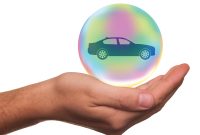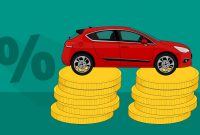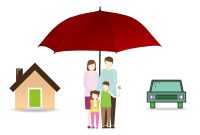You might have heard about the effect of weather damage on car insurance rates. However, there are many misconceptions about this issue. This article will explain the effects of natural disasters on your insurance rates and provide ways you can protect your vehicle from this type of damage. It is important to know what your insurance company will consider when you renew your policy.
Misconceptions about weather damage and car insurance
Weather damage to cars is a major factor in determining the cost of insurance policies. Drivers in places with harsh weather will pay more for their premiums than those living in more temperate climates. This is not surprising since extreme weather can have a devastating effect on a car, which can result in higher insurance costs. Even a single bad winter can increase premiums by several hundred dollars for a policyholder. Fortunately, there are ways to mitigate the impact of weather on insurance rates and get the lowest premium possible.
In addition to weather-related factors, auto insurance rates also depend on the risk of driving in the area. A number of different factors influence these rates, including the number of accidents and thefts in a certain area. Weather is one of the most significant factors, but it doesn’t increase rates in every month. In fact, auto insurance rates are lowest in December, making it a good time to buy coverage for your car.
Factors that affect auto insurance rates
Weather damage has a large impact on car insurance rates. In areas with extreme weather, insurance companies may raise premiums across the board to make up for the losses. Often, the severity of the weather can result in a large number of property damage claims. The higher the costs, the higher the premiums will be. The good news is that these increases aren’t necessarily significant and may only mean a couple of extra dollars per month.
Other factors that can affect your auto insurance rates include the type of car and its value. For instance, if you drive an expensive SUV or sports car, you will be required to carry more coverage. Also, your age and location are factors. If you live in a high-risk area, your premiums will be higher than if you live in a small town.
Your zip code and street address can also impact your auto insurance rates. For example, in California, your zip code can affect your rate by as much as 91%. Additionally, the area you live in is likely to have higher crime rates and more accidents. Rural areas are less likely to experience these problems, and roads are less congested.
Effects of natural disasters on auto insurance rates
Natural disasters can have a significant impact on auto insurance rates. In some cases, natural disasters will lead to large increases in premiums, as a result of increased property damage and insurance claims. Even if you don’t live in an affected area, it’s still important to be prepared.
The insurance industry is split over how much the government should pay for natural catastrophes. Some say it is unnecessary to use federal funds, and that the money should be spent in a predictable and organized manner. Others argue that U.S. primary insurers have enough reinsurance capacity to cover disaster losses.
In addition to costs, natural disasters can cause significant damage to vehicles. Comprehensive and full coverage insurance policies can help cover these costs. However, if you are minimally insured, you may be out of luck.
Ways to protect your vehicle from weather damage
The best way to protect your vehicle from weather damage is to keep it in a garage or in a covered parking area. However, you can also protect it outside by using a fitted canvas car cover. You can also protect your car from hail by using floor mats, which should be placed rubber side down.
If you live in an area with a harsh climate, it is important to invest in comprehensive auto insurance. Your rates might be higher in this case, but if you live in an area that is prone to natural disasters, this coverage will be a must. In these areas, the risk of accidents and vehicle damages are greater than in other areas.
Comprehensive car insurance covers damages caused by storms, heavy rain, hail, and other weather events. This type of insurance also covers tree branches blown down during a storm. While comprehensive insurance is optional, lenders often require it to protect their customers. It pays for repairs and replacements of a damaged vehicle – if necessary.



